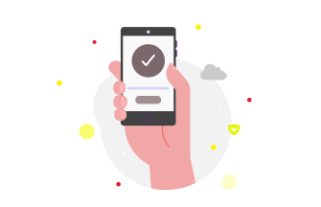Introduction
Debt is a part of many people's lives, whether it's taking out a loan for higher education, buying a home, or starting a business. But not all debts are created equal. Some debts can actually work in your favour and help you achieve your financial goals, while others can become burdensome and hold you back. Understanding the difference between good debt vs bad debt is crucial to making informed financial decisions that will positively impact your future.
In this article, we will explore between good debt vs bad debt, provide real-life examples, scenarios, and analogies, and offer actionable tips on effective debt management.
Good debt
Good debt is an investment in your future financial well-being. It typically involves borrowing money for assets that have long-term value or can generate income. Here are some examples of good debts:
- Mortgage Loan: Purchasing a home is often one of the most significant investments individuals make in their lifetime. A mortgage loan allows you to finance your dream home while potentially benefiting from increasing property values over time.
- Student Loan: Investing in education can lead to higher earning potential and better career prospects. Taking out a student loan to fund your education can be considered good debt if it helps you acquire valuable skills and knowledge.
- Business Loan: Entrepreneurs often rely on business loans to start or expand their ventures. These loans provide the necessary capital to invest in equipment, inventory, marketing efforts and other business needs. The potential for increased revenue makes it a good debt.
- Unsecured Personal Loan: Consolidating high-interest debts into a single loan with a lower personal loan interest rate can be an effective way to manage your finances. An unsecured personal loan provides the flexibility to use the funds for debt consolidation or other purposes without requiring collateral.
Bad debt
On the other hand, bad debt refers to borrowing that does not contribute to your long-term financial well-being and becomes difficult to repay. Here are examples of bad debts:
- High-Interest Credit Card Debt: Credit card debt often comes with high interest rates, making it challenging to pay off. Accumulating significant credit card debt can lead to a never-ending cycle of minimum payments and interest charges, resulting in financial stress.
- Payday Loans: Short-term loans with exorbitant interest rates, such as payday loans, may provide quick cash but can trap borrowers in a cycle of debt. These loans are typically due on the borrower's next payday and can lead to further financial strain if not repaid promptly.
- Non-Essential Loans: Taking out loans for non-essential expenses like luxury vacations or unnecessary purchases can result in bad debt. These loans don't offer any long-term benefits or generate income, making them detrimental to your financial health.
Effective debt management
Now that we know the difference between good debt vs bad debt, let's understand how to effectively manage debt and do proper bad debt recovery.
- Consider Long-Term Benefits: Before taking on any debt, evaluate whether it will contribute to your long-term financial goals or simply add to your burden.
- Emergency Fund: Building an emergency fund is crucial in avoiding excessive reliance on credit cards during unexpected crises. Having funds set aside for emergencies helps you maintain financial stability and avoid falling into bad debt.
- Credit Utilisation: Keep your credit utilisation ratio, i.e., the amount of credit used compared to the available limit, below 30%. This demonstrates responsible credit usage and prevents lenders from considering you a risky borrower.
- Timely Payments: Making timely repayments is crucial for maintaining a good credit score and avoiding unnecessary penalties or late fees. Utilizing tools like a personal loan EMI calculator can help you plan your repayments more effectively.
Debt consolidation: A Possible Solution for Bad Debt Recovery
If you find yourself struggling with multiple high-interest debts, debt consolidation can be an effective solution. By consolidating your debts into a single loan or credit, you can potentially lower your interest rate and simplify your financial obligations. This way you can efficiently do bad debt recovery. One option for debt consolidation is a personal loan that allows you to merge all your debts into one manageable payment.
Conclusion
Understanding the difference between good debt vs bad debt is essential for making sound financial decisions. Good debts can be instrumental in building your financial future, while bad debts can hinder your progress and lead to financial stress.
If you find yourself burdened by bad debts, Mahindra Finance's personal loan for debt consolidation may be a potential solution to help you regain control of your finances. Remember, making wise borrowing decisions is crucial for achieving your financial goals and securing a stable future.
FAQs
Q: How can I distinguish between good debt and bad debt?
Good debt serves as an investment in assets or income generation opportunities, while bad debt offers little long-term value or goes beyond your ability to make monthly payments.
Q: What are examples of good debts and bad debts?
Good debts include mortgage loans, student loans, and business loans. Bad debts encompass high-interest credit card debt, payday loans, and non-essential loans.
Q: How can I effectively manage my debts?
Consider the long-term benefits before borrowing, build an emergency fund, keep your credit utilisation low, and make timely repayments.
Q: When should I consider debt consolidation?
Debt consolidation is a viable option if you have multiple high-interest debts. It allows you to combine your debts into one manageable payment with potentially lower interest rates.






















































